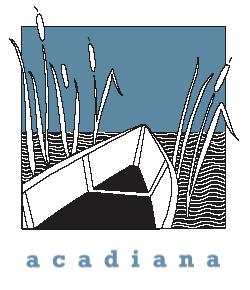|
Acadiana: Washington D.C.'s Hottest New Restaurant An audio report by Traveling Chef Tom Leperi |
||
|
|
||
Talking Travel's Traveling Chef Tom reports on a new restaurant in Washington D.C. that specializes in Louisiana cuisine. |
||
What is Acadiana? Acadiana, a Louisiana Fish House is the fourth in a string of restaurants opened by Passion Food, LLC. It is located on the corner of New York, 9th, and K. It's guiding philosophy is to pursue the truest passions in food and wine where imaginative food and wine are accompanied by gracious hospitality, comfortable surroundings and outstanding value. The name of the restaurant was chosen because it evokes a strong sense of place and time where life and food are enjoyed to the fullest. The restaurant presents dishes that represent various cooking techniques borrowed from the New Orleans and Lafourche – Teche area which covers the area from Baton Rouge westward to Opelousas. The food at Acadiana is served in a casual, authentic, and modern setting. The menu changes based on the freshest seafood in its peak season; predominately from Southern Louisiana and also some from the nearby Chesapeake Bay. It evokes the authentic flavors of a rigorous and gracious country life loved by those who know it, and by those who seek to. Executive Chef Jeff Tunks, presents modern interpretations of Louisiana fish house classics. Upon entering one hears the faint sounds of blues, jazz and zydeco. The multi-levels and cool hues of the numerous secluded rooms evokes the bayou country, plantations, and New Orleans grandeur. The owners use an analogy when describing the interior of the restaurant as being “Like a southern lady who captures attention with her pearls and her charm in a room-full of men, the interior of Acadiana is highlighted here and there with sparkling feminine touches in a predominantly masculine space.” Acadiana, a Louisiana Fish House has a temporary web site: www.acadianarestaurant.com which contains the full menu. The following are some of the dishes my wife and I sampled. Appetizers buttermilk biscuits fried green tomatoes Entrées grilled gulf redfish Dessert bread pudding The Cajun Influence During the 1700s 5,000 French Acadians were forcibly relocated from what is now Nova Scotia to the Southwestern area of Louisiana — known as Bayou Country or Acadiana. There the Acadians and many other ethnic groups developed the “Cajun” culture and cuisine that are distinctive and unchanging. Acadiana is the home of the Cajun people, the descendents of the Acadians The Cajun-Creole culture is incredibly rich in music and culinary traditions and is unique. The people lead simple and rich lives and are warm and hospitable. They revel in great food, dance halls ringing with rollicking music and trembling with foot-stomping of dancers, and appreciate the quiet, singular beauty of the bayous and swamps of the Atchafalaya Basin. The Creole Influence The Creoles were the offspring born in New Orleans of the European aristocrats. In order to settle and establish New Orleans in the 15th century, the Spanish offered land and the opportunity to live and prosper in their family traditions in the New World. Second-born sons could not own land nor titles in their native countries. Today, the term Creole in New Orleans refers to the native-born children of the early cultures who settled in the city. These include Native American, French, Spanish, English, African, German, and Italian. This cultural mix further defines the cuisine that came from these cultures. More information on New Orleans and Cajun culture, food, and recipes can be found on the website of New Orleans “expat” Chuck Taggart . For in-depth information on the Acadian-Cajun connection, read Peter Flaherty's article When's an Acadian a Cajun? |
||
